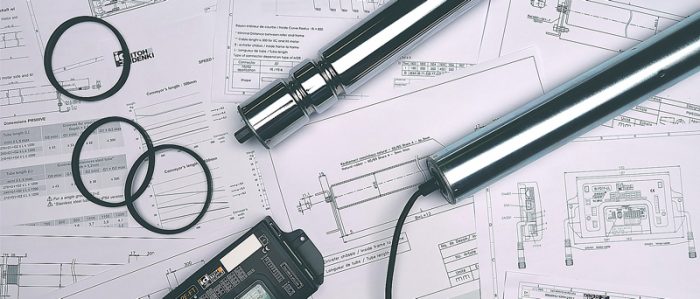Itoh Denki discusses the critical factors when deciding for conveyor’s transmission belt

Conveyor system design requires sound choices in a number of areas in order to achieve the best and most cost-effective solution.
One of the most important decisions facing any designer surrounds the selection of the most suitable type of transmission belt to drive the conveyor.
A number of factors typically influence this decision when it comes to the specification of conveyors based on motorised drive roller (MDR) technology – the most popular choice in most modern applications.
Firstly, designers need to consider the size, shape, weight and variety of items to be conveyed.
Secondly, transmission choice will at least in part be governed by whether the conveyor will run in a straight line or be curved at any point, and whether it will incorporate any inclines or declines.
The environment in which the conveyor will operate is also a factor. Conveyors operating in clean rooms or cold rooms need to be easily cleanable, while the presence of potential contaminants such as water or oil must also be considered.
Finally, specifiers must consider maintenance and ideally seek a solution which will require minimal intervention – and the ability for this work to be undertaken by in-house colleagues wherever possible when maintenance is needed.
The main options for specifiers are ribbed belts, O-rings (also known as round belts), and belt on rollers.
Available since the late 1990s, ribbed belts typically offer the highest level of torque transmission from motorised roller to slave rollers, meaning they can handle loads of up to 2 tonnes at a time across a longer conveyor zone. This allows up to five times more slave rollers to be driven by a single MDR when compared with other solutions. They boast a long life cycle with strong resistance and minimal loss of tension over time; they are also rapid and simple to install and replace.
And while their purchase price may be slightly higher than some other solutions mostly due to the use of VG pulleys on the rollers, this is frequently offset by the reduced number of MDRs needed.
It’s worth noting, however, that, as they are challenging to wash, ribbed belts are rarely selected for clean rooms or applications with direct food contact. They are also only suitable for conveyor lines with curves of up to 5°; beyond that, another solution must be chosen.
This typically comes in the form of O-rings or round belts. Once again easy to install and replace, these provide the most flexible and cost-effective solution for curved conveyors pending the development of new hybrid belts which can deliver the high friction required for these installations.
Again this solution offers good resistance, and excellent retention of tension over time. However it should be noted they are not ideally suited for heavy loads.
MDRs with several profiles of grooves are available from Itoh Denki for specifiers selecting this type of solution.
A third solution exists in the form of belt on rollers. While they are typically a more expensive option and may require more regular retensioning, they are the most effective for conveying items of any shape or size and ideal for conveyors incorporating an incline or decline. However, they are not a cost-effective option for long, flat conveyor lines, while sturdier and stronger rollers are needed because of the tension applied to the MDR.
For belt on roller applications, MDRs with crowned tubes – slightly angled edges – are available which allow for natural centring of the belt.
For more information, please visit https://www.itoh-denki.com/.
News Categories
- » NEWS HOME
- » Automation & Robotics
- » Industry 4.0
- » Material Handling
- » Sensors
- » Quality & Testing
- » Machine Vision
- » Laser & Optics
- » Metalworking
- » Motion Control & Drives
- » Hydraulics & Pneumatics
- » Process Industry
- » Renewable Energy
- » Agriculture
- » Home & Office Furniture
- » Environmental Tech



